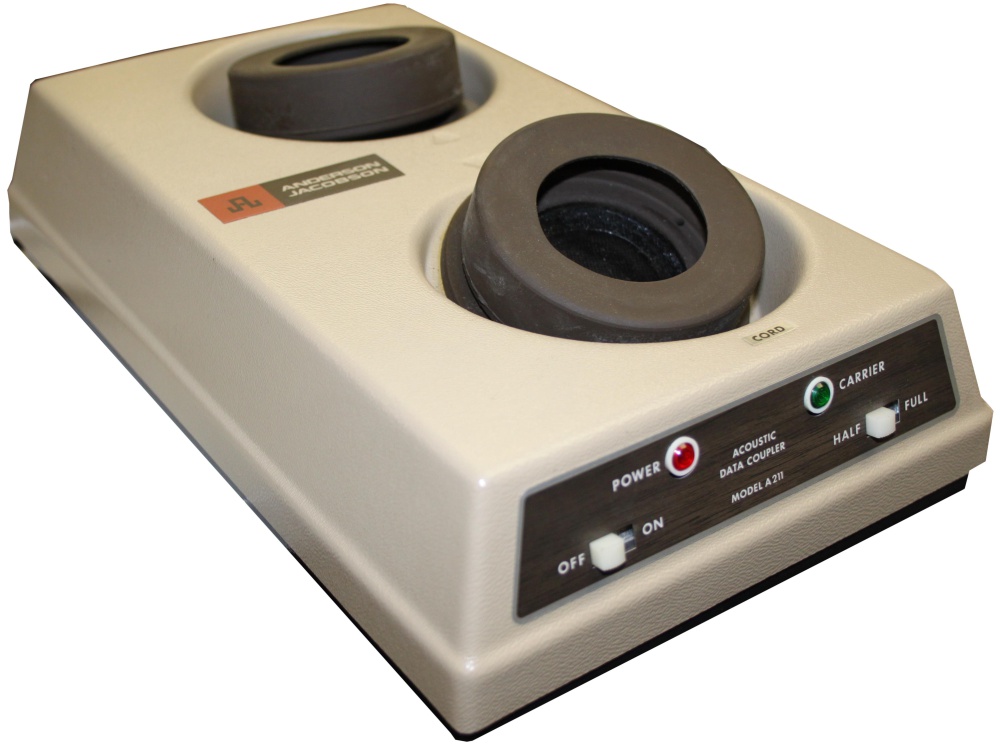Anderson Jacobson A211 Acoustic Coupler
| Home > Browse Our Collection > Peripherals > Communications > Anderson Jacobson A211 Acoustic Coupler |
|
Anderson Jacobson was primarily a manufacturer of acoustic coupler modems, but also manufactured printing terminals designed to replace teletypes. Anderson Jacobson began early in 1967 as a manufacturer of one of the first acoustic data couplers. By 1973, the company had acoustic coupler products that transmitted at 150, 300, 450 and 1200 baud. The 1200 baud acoustic coupler believed to be the only one of its kind in 1973. An acoustic coupler is an interface device for coupling electrical signals by acoustical means — usually into and out of a telephone instrument. The link is achieved through converting electric signals from the phone line to sound and reconvert sound to electric signals needed for the end terminal, such as a teletypewriter, and back, rather than through direct electrical connection. It is designed for acoustically coupling a telephone to a data terminal for the purpose of transmitting or receiving messages, where the telephone handset is placed on a bracket mounted directly on the chassis of the terminal. Isolation of transmitting and receiving acoustic links is provided by a pair of resilient cups, one for each link. The inside contour of each cup is adapted to provide a supporting annular ledge for one end of the telephone and an airtight seal over the transducer thereof. An annular recess below the ledge is formed to receive and tightly hold a flange of a receiving or transmitting transducer. Each cup is mounted on the bracket by a resilient flange. The flange is connected to the cup by a sleeve which is turned in at the top to form an inverted auxiliary cup with the base of the main cup protruding through the bottom of the auxiliary cup. In that manner, virtually complete acoustic isolation is provided by the cup from the surrounding air and bracket. Manufacturer : Anderson Jaobson Format : acoustic coupler Physical Description : Acoustic Coupler This exhibit has a reference ID of CH41824. Please quote this reference ID in any communication with the Centre for Computing History. |
|






















